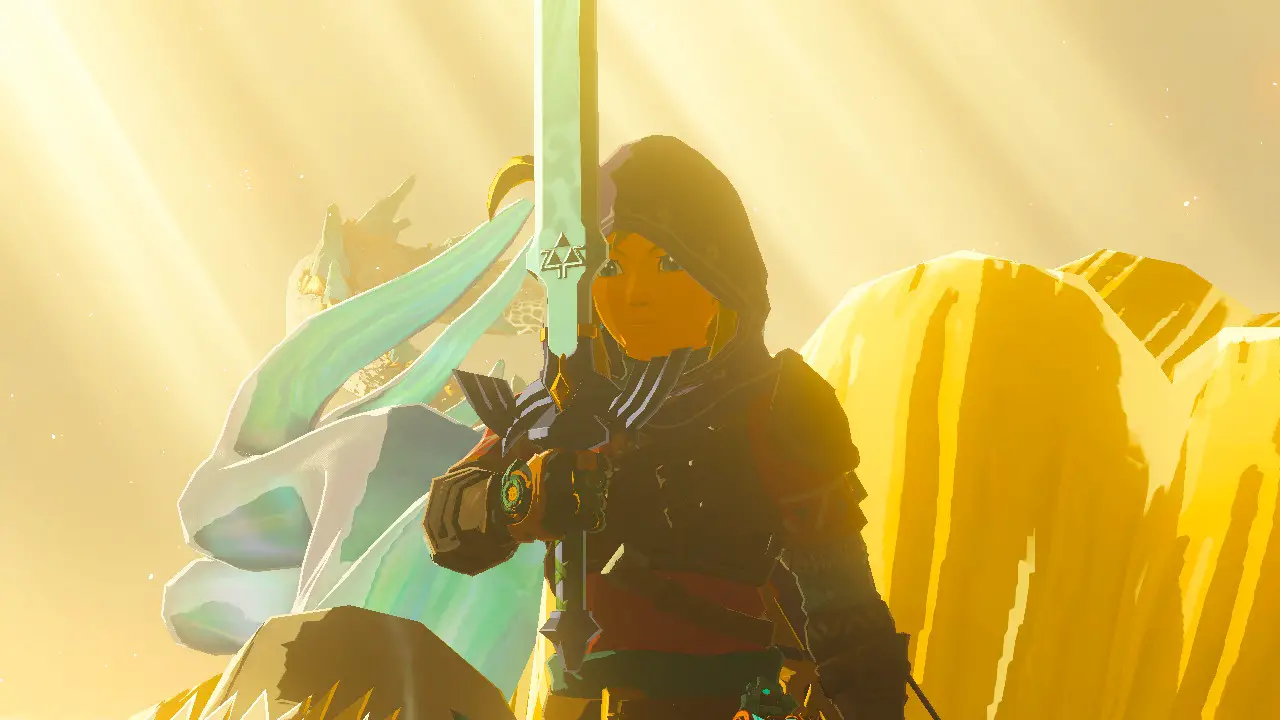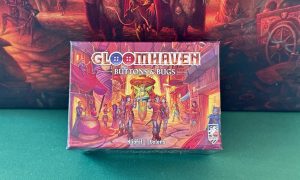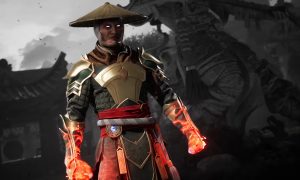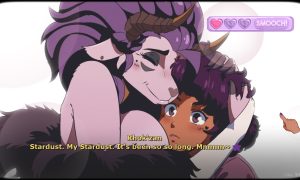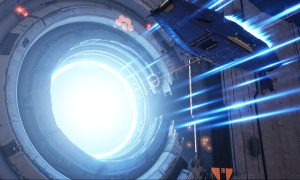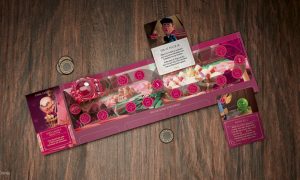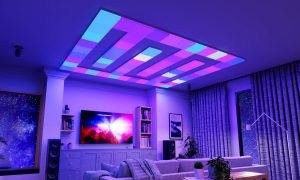There’s a philosophical concept called the Ship of Theseus that I enjoy thinking about. Essentially, it asks that, if you have a ship and replace every single part of it over time due to wear and tear, is it still the same ship? If you save all the old parts and recreate the original ship, is one vessel more “your ship” than the other? I think the idea can be applied to art as well. Are remasters and remakes, even those that closely follow the original, still the same piece of media?
The Legend of Zelda: Breath of the Wild was a reinvention of the series, rethinking everything, but many asked if it was still a “Zelda” game. Just like the ship, my answer to that is yes. Zelda is about two things: adventure and discovery, and BotW delivered on both despite or because of those changes. To continue the comparison, we now have a Ship of Theseus II in the form of The Legend of Zelda: Tears of the Kingdom, and adding all these new parts has bridged the gap between the two forms of Zelda.
A few years after Calamity Ganon’s defeat, Link and Zelda are exploring the depths of Hyrule Castle. There, they find a corpse being held down by a severed arm, which is glowing with strange magic. As the pair get close, the corpse comes to life and attacks Link, breaking the Master Sword, stripping him of all his power, and destroying his arm. The ground gives way, and the two fall into the abyss. Link wakes up later on a series of islands in the sky, the magic arm now in place of his old one, with a single goal: Find Zelda.
Hyrule has changed from top to bottom, literally as it’s now separated into three maps: Sky, Surface, and Depths. You can freely traverse between all three of these seamlessly, which is super impressive. You, of course, begin the game in the sky on the tutorial island, and can’t descend until you’ve completed the story there and all four Shrines of Light. These shrines function exactly like shrines in Breath of the Wild, serving as puzzles, combat challenges, or whatever else the developers could cook up. Completing them will reward you with a Light of Blessing. Once you have at least four, you can redeem them in groups of four to cleanse Link of the corpse’s evil, increasing his maximum hearts or stamina.

You’ll find shrines all over the place, incentivising exploration off the beaten path, or even on it because these things are everywhere. They make the game’s empty space matter because you never know when that field seemingly devoid of life is holding a shrine. It’s an engaging gameplay loop that makes a few minutes turn into hours and then oops it’s 2 AM. Even without everything surrounding the world and shrines, this would still be a great game.
But Tears of the Kingdom is essentially about that set dressing to break or spice up the flow. At its core, this plays exactly like Breath of the Wild. Link can equip one of three types of weapons from his inventory, swords, spears, and greatswords, along with a bow, clothing, and shield to battle enemies and solve puzzles. Pressing Y will attack with your currently equipped weapons, while ZR aims and draws the bow while held. Holding B while moving sprints, consuming stamina, X jumps, and A interacts. You can also hold R to throw your weapon, press in the left stick to crouch, and press X while crouching to do a small forward hop (which no longer consumes stamina).

Of course, I made it my first mission to trek all the way over to Hateno Village on the eastern side of the map to dye my clothes because I have my priorities straight. I had a lot of difficulty getting there, despite playing all the way through BotW five times, because enemies scale with you much less here. Sure, you’re free to go anywhere, but you will find stronger foes in certain parts of the world, nudging you to follow the story at least for a little bit. It’s a great way to make Hyrule feel dangerous again.
You will need to master the Fuse ability to get anywhere in Tears of the Kingdom, and it’s a lot of fun to experiment with. I began the game just fusing weapons with other weapons, like a broadsword glued to a spear to give it more reach, but that doesn’t give you much attack power. Instead, you want to replace the pointy bit entirely with new materials like Moblin horns, which will alter the weapon’s shape but actually give you a fighting chance in terms of attack power. There are even benefits to fusions beyond combat, like attaching a wooden plank to a stick which gives each swing release a gust of wind, which is helpful for some puzzles or traversal. I especially like the dynamic of fusing gems to get elemental wands or saving them to sell for money. This ability feels like it connects every part of the game, making you think how to use your materials wisely while leaving room for experimentation.

Getting into the details is where things start to differ. Progressing through the tutorial will grant Link new powers thanks to his new arm, which is used by pressing L and swapped out using a radial menu opened by holding L. Ultrahand (a reference to a toy created by Gunpei Yokoi for Nintendo in 1966) lets you pick up objects highlighted in orange, move them around, and even stick them together with some icky, paint-like goop. Fuse does what the name implies – allowing you to fuse weapons and arrows with objects or materials for different effects. Ascend can send Link swimming up through solid terrain, emerging on the other side, and finally Recall will rewind an object through time.
This is a toolset with almost endless possibilities and relies more on player expression and creativity than designed solutions. For example, let’s say you’re standing on one side of a gap you need to cross. You could create a flying machine with Ultrahand to soar over the crevice, jump below then swim through the cliff with Ascend, fuse a spring to your shield to bounce across or… just build yet another bridge by sticking trees together. On the surface, it seemed like the game would focus mostly on Ultrahand (and its convenient counterpart AutoBuild to recreate your creations) similar to Banjo Kazooie: Nuts & Bolts, but every power sees constant use.

Those vehicles can be a ton of fun to build and use, but very annoying simultaneously. Creating a death machine to wipe out waves of enemies has a child-like joy to it that hasn’t worn off after dozens of hours, but after its initial use, most vehicles feel too disposable. At the beginning of the game, I tried to make cars to get around Hyrule but I would constantly run into obstacles like trees or hills that are just too steep that would require getting out of my car and manually carrying it over or through with Ultrahand. I have tried many, many times to tow my creations like planes using the towing harness you can get for horses, but my steed will constantly refuse to move forward with anything but the pre-made carts attached. You’re clearly not intended to use a single vehicle for the entire game, as they despawn anyway if you walk too far away, but I would like them to be useful for more than five seconds. The parts will also break or detach after some extended use – no flying from one end of the map to the other for you. As they are, your creations are basically one-trick ponies.
That said, you can create some WILD stuff if you have the parts and imagination. I’ve seen dog petting machines, jet skis, paddle boats, mecha, and more. Most of the creativity comes from Zonai Devices such as fans, hot air balloons, flamethrowers, bird-shaped planes, wheels, and more. Any of these that require activation will use up your battery. While it recharges on its own, draining it entirely will require you to wait until it’s full again to reactivate anything. You can upgrade this battery later on, but at the start, you only have three charges. Hitting these devices or anything they’re glued to will activate them, but attaching a control rod will allow you a bit of control over your contraption with the analog stick. You’ll still enjoy Tears of the Kingdom even if you’re not the creative type, however, because it all comes down to doing things how you want to do them. If you want to solve every single puzzle with a bridge, go for it. The sky’s the limit, but you can stay on the ground if you’d like.

That freedom is easily the best thing about Tears of the Kingdom, which is why it’s still baffling Nintendo staunchly refuses to create good options menus. Thankfully you’re able to invert camera controls, rotation for Ultrahand, locking the minimap to the north (as god intended), and a few other options like Pro mode hud (which could also use the ability to bring up the hud by, say, holding A for a time), but it’s shocking how Nintendo’s design philosophy is player friendly but only if you’re entirely able-bodied. I’m lucky enough to play their games perfectly fine, but it saddens me to think others may not be able to enjoy this wonderful experience to the fullest.
Despite my issues, this is a fantastic game. Breath of the Wild distilled Zelda back to its base components, but Tears of the Kingdom is slowly fusing some of the series’ trappings back into this new style. While you can still climb basically any surface, figuring out how to get places faster and more efficiently with your new powers feels like an extension of the world opening up with items.

The biggest returning feature are the dungeons, which feel like a combination of new and old design philosophies. You’ll find these in the open world, with no loading screens to enter them, though you’ll need the designated companion’s powers from the story to reach them. Each tasks you with activating a few switches in corners of the dungeon to then fight the boss. They’re still more open and freeform like the Divine Beasts which isn’t to my tastes, but they’re bigger with more puzzles to solve. They’re fairly easy but with at least one great brain teaser in each. Completing a dungeon will reward you with the ability to summon an avatar of said companion, who will fight alongside you and allow you to use their power by walking up to and interacting with them. In all honesty, they mostly get in the way and make the game too easy, so I’d recommend only summoning them in the depths.
Dungeons are nice to have back, but they aren’t the focus here, the world is what really matters. It’s not an exaggeration to say this feels essentially like a new map, but 3 times as big with the sky and depths included. This is less like returning to the same Hyrule, and more like hearing echoes or whispers of the old one as you explore. After meeting up with Purah, you’re tasked with investigating phenomena in four corners of Hyrule, but you can go wherever you like and only doing the main quest won’t show you much of the world. However, not all monsters will scale to Link’s strength anymore, which means you’ll encounter the stronger black and silver variants in certain locations no matter what. It may not be in your best interests to, for example, run straight to Hateno village to dye your hood purple when you only have four hearts. You can still do that if you have enough determination and fashion sense, but it will be harder than if you come back later. This makes Hyrule feel dangerous again, a feeling the game retains for your entire playtime, unlike Breath of the Wild.
The reworked durability system also contributes to this feeling. Weapons will break after a certain amount of use, requiring you to constantly be on the lookout for additions and replacements for your arsenal. Thanks to the Upheaval, the inciting incident that caused Hyrule to change so much, almost all weapons have decayed, making them even more fragile. This is where Fuse comes in, as you can attach basically anything to your weapons, shields, and arrows. You could attach a spear to a short sword to give it a bit of a boost in attack power and greater range, but what you really want to do is replace the pointy bits entirely with monster horns. These will give the attached weapon much more durability and attack power, but of course, you have to defeat monsters to get those horns, breaking weapons in the process. This makes for a nice progression loop and discourages hoarding until the endgame.
For weapons, I liked to use horns on swords and spears, and rocks and boulders on greatswords to create mining tools and gather gemstones to sell for rupees and Zionite to crystalize and then exchange for battery upgrades or use to recreate contraptions with AutoBuild. I just don’t like using Greatswords in combat, and this is a great alternative use that still gives them relevancy. Fusing will grant weapons what I’ve been calling a sub-type depending on what you fuse. Putting rocks or any other type of blunt instrument on a weapon will make it a hammer, great for breaking ore deposits and armor on enemies, while the pointy things are better for cutting. This gives you one more thing to consider when creating weapons, as you’ll need both types throughout the game.

Arrow fusion is much more one-off, but still just as interesting. You can put eyeballs on arrows to make them home in, useful for flying monsters or any type of elemental fruit to create fire, ice, electric, or water arrows. This process is a bit clunky as you need to hold up on the D-Pad and navigate a list using left or right on the right stick, but thankfully you can sort by most used. You never know what a fusion will do until you test it out, and I’m still discovering new combinations late into the game. Likewise, shields have interesting fusions as well, though are best left unfused normally until a fusion could be specifically useful. For example, putting a Zonai Spring on a shield will allow you to gain a ton of height with a shield surf, while a Puffshroom will confuse any enemy who hits it. You can even fuse a minecart to a shield to make a skateboard, which makes the new rail grinding ability feel right at home.
Whether you’re walking, riding a horse, flying, or grinding rails, the world around you is universally beautiful. It’s colorful, even in relatively monochrome areas like the Hebra region, with a gorgeous art style that feels like a happy medium between Wind Waker and Twilight Princess. The lighting effects are especially impressive, with jaw-dropping sunsets and rays of light cascading through ruined buildings. If Breath of the Wild was post-apocalyptic, Tears of the Kingdom feels post-post-apocalyptic with Hyrule more populated and alive than ever. While the world will exist and carry on without you, it also reacts to your presence. Completing the main quest will clear up some bad weather in certain areas, but finishing certain side quests will also have a ripple effect with people talking about the changing situation or even having new dilemmas for you to solve. Combined with the immaculate physics and “chemistry” system, it’s easy to forget about the controller in your hands and just exist in Hyrule for a while.

Of course, the Switch is aging quickly, and not even Nintendo, Monolithsoft, and their other collaborators can overcome its limitations. You’ll frequently encounter framerate dips that take you out of the world, especially in battles with several enemies or all of your summons. The game is supposed to run at 30 frames per second, but it can feel more like Ocarina of Time at 20 or less fps.
While it may have technical problems, Tears of the Kingdom is one of Nintendo’s best stories to date. Everything is essentially optional, but discovering what happened to Zelda and getting to know all the new and returning characters is a driving force behind the adventure. I don’t want to spoil anything, but there’s some great cinematography in cutscenes as well as a thematic through line of the past affecting the future symbolized by holding hands. The finale is amazing as well, with a tough gauntlet of boss fights and a climactic final confrontation. I’m interested to see how things change depending on your progress, but I’m also happy with the ending I got by completing almost everything on the critical path aside from a single memory. I do still wish I had the option to make Link a girl (I’d take just changing pronouns too) because his gender really doesn’t matter here, but this is still a fantastic tale.

This is all punctuated by a fantastic soundtrack. It’s still understated, but there’s much more of it with area themes and Link will even hum classic tunes while you cook. Music is a big part of Zelda, and adding so much here, both new and old, makes it feel more like… well, Zelda. The Legend of Zelda isn’t about saving the princess or swinging a sword, it’s about going on an adventure, discovering secrets, and forming a connection with the world and its characters. The music only helps Tears of the Kingdom excel in being more Zelda.
David is the kind of person to wear his heart on his sleeve. He can find positives in anything, like this is a person who loved Star Fox Zero to death. You’ll see him playing all kinds of games: AAAs, Indies, game jam games, games of all genres, and writing about them! Here. On this website. When not writing or playing games, you can find David making music, games, or enjoying a good book.
David’s favorite games include NieR: Automata, Mother 3, and Gravity Rush.

The Legend of Zelda: Tears of the Kingdom is a wondrous adventure that somehow makes exploring the same Hyrule magical again. The returning Zelda tropes aren’t quite at their strongest yet and there are some technical and mechanical issues, but this incredible feeling of adventure is something that can only be done through a video game. Tears of the Kingdom masterfully builds on its predecessors to bring the new and old together once more.
PROS
- Hyrule feels completely different
- Amazing and versatile powerset
- Gorgeous visuals
- Fantastic story and theming
CONS
- Vehicles feel too disposable
- No accessibility options
- Technical hiccups
See below for our list of partners and affiliates:
